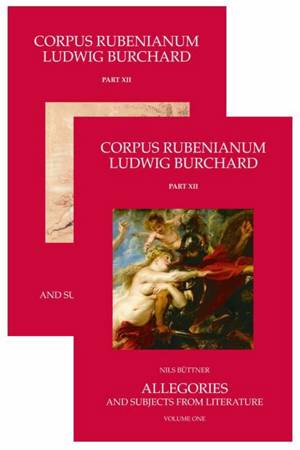
- Retrait gratuit dans votre magasin Club
- 7.000.000 titres dans notre catalogue
- Payer en toute sécurité
- Toujours un magasin près de chez vous
- Retrait gratuit dans votre magasin Club
- 7.000.0000 titres dans notre catalogue
- Payer en toute sécurité
- Toujours un magasin près de chez vous
Description
Rubens had a profound impact on the visual culture of his age. He was admired not only as a painter but also for his learning, for the knowledge of classical literature and imagery which he exploited so brilliantly in arresting and powerful pictures. Rubens was particularly drawn to allegory, to the use of personified figures, sometimes in combination with the gods of the ancient pantheon and certain humans (historical individuals), to express concepts, ideals and even political messages. A contemporary praised him for using in his allegorical compositions 'only symbols of Antiquity, thus popularising the coins and other monuments of the ancient world', but Rubens adapted ancient symbolism to new effect, with the aim of creating pictures whose essential meaning would be the more accessible for it. This volume presents works that Ludwig Burchard (1886-1960) planned to include in his catalogue raisonne under the heading 'Allegories and Subjects from Literature'. It features some of the artist's most celebrated paintings, as well as some lesser-known or recently discovered items. The themes range from nature's abundance to the dangers of excess, from human love to political expediency, triumph and 3the celebration of religion. It includes masterpieces as diverse in tone as the Shivering Venus (Antwerp, Koninklijk Museum voor Schone Kunsten) and the Horrors of War (Florence, Palazzo Pitti), memorably described by a great historian as 'the immortal and unforgettable frontispiece to the Thirty Years' War'. As well as an introduction to the subject, the catalogue provides extensive analyses of each work, revealing Rubens' literary and visual references. The circumstances surrounding the making and display of every item are investigated and considered alongside the artist's own creative process, since knowledge of the intended context and the early viewing conditions of Rubens' works is so important to the understanding of their significance. Thus particular attention is paid to provenance, not only for the works themselves, but for the copies made after them.
Spécifications
Parties prenantes
- Auteur(s) :
- Editeur:
Contenu
- Nombre de pages :
- 856
- Langue:
- Anglais
Caractéristiques
- EAN:
- 9781912554119
- Date de parution :
- 20-12-18
- Format:
- Livre relié
- Format numérique:
- Genaaid
- Dimensions :
- 178 mm x 267 mm
- Poids :
- 3098 g

Les avis
Nous publions uniquement les avis qui respectent les conditions requises. Consultez nos conditions pour les avis.






